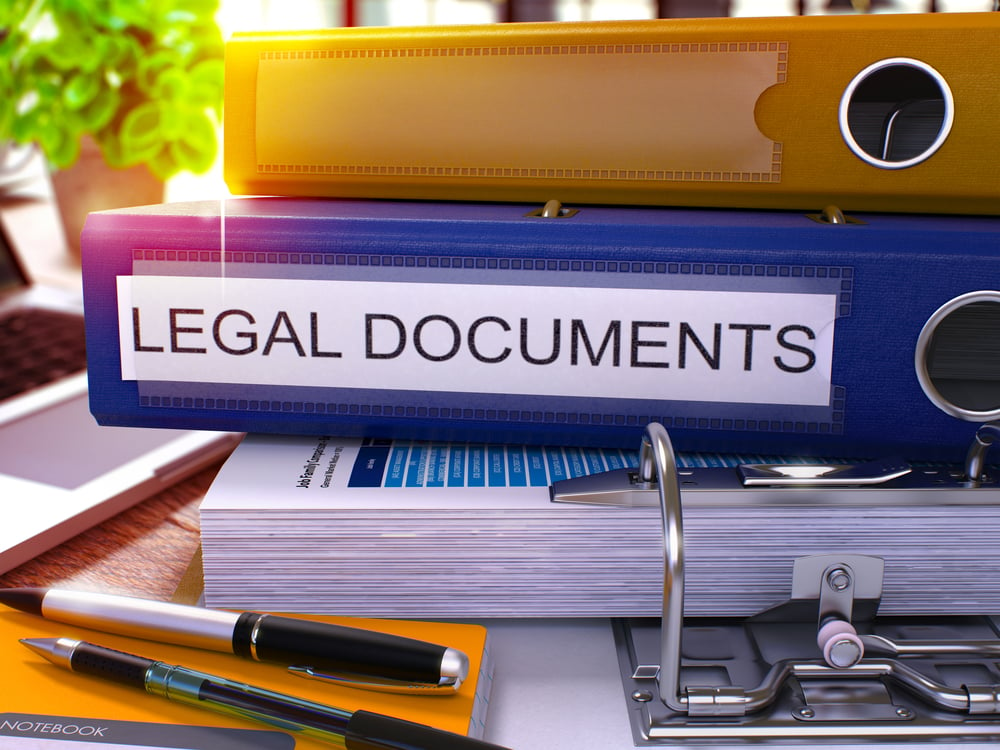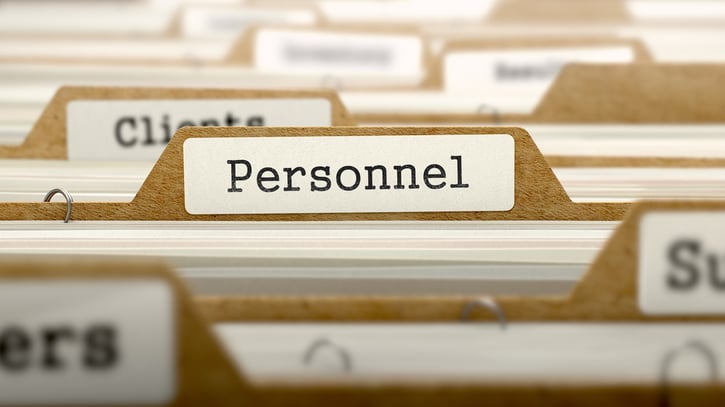What is a personnel file?
A personnel file is a separate file that contains documents related to an employee's employment history, job performance, and other personal information. It is also commonly referred to as an employee personnel file.
Employee personnel files are typically maintained by the human resources department and are used to track an employee's progress and document important information about their employment.
Employees must keep their personnel files updated and accurate as they can be used to make decisions about promotions, salary increases, and other employment-related matters.
Importance of a personnel file
Personnel files are important for employers and employees alike. Here are some reasons:
Legal compliance
A personnel file can help an organization comply with employment laws and regulations. For example, an organization may be required to maintain certain documents, such as performance evaluations or equal employment opportunity records, in an employee's personnel file.
Documenting performance
A personnel file can document an employee's performance over time. This can include performance evaluations, supervisors' feedback, and records of any training or development the employee has received. This information can be useful for making decisions about promotions, salary increases, and other personnel matters.
Facilitating communication
A personnel file can help facilitate communication between employees and their supervisors or HR departments. For example, employees can refer to their personnel file for answers to their job duties or benefits.
Tracking employee history
A personnel file can be a valuable resource for tracking an employee's history with the organization. This can include their start date, job titles, responsibilities, and any promotions or transfers they have received. This information can be useful for tracking an employee's career progression and making informed decisions about their future with the organization.
Protecting the organization
A personnel file can help protect an organization in the event of a legal dispute with an employee. For example, suppose an employee claims they were terminated or treated unfairly.
In that case, the organization can refer to the employee's personnel file documentation to support their decision-making and actions.
These are just a few reasons why personnel files are important. Organizations should ensure they always have an up-to-date and accurate personnel file for each employee to protect their interests and comply with employment laws.
What should be included in a personnel file?

Now that we know what a personnel file is and why it's important, let's look at what should be included. Here are some common items that may be present in an employee personnel file:
Personal Information
A personnel file should include personal information about the employee, such as their name, address, phone number, and other relevant contact information. This information is important for the employer to have on hand for communication purposes and for maintaining accurate payroll records.
Useful Read: A Review of the Best Payroll Service Solutions of 2025
Employment History
The personnel file should also include a record of the employee's employment history with the company, including their:
- Job titles
- Start and end dates
- Any relevant job descriptions or contracts
This information is important for tracking an employee's career progression and making informed decisions about promotions and other opportunities within the company.
Performance Evaluations and Feedback
Performance evaluations and employee feedback are important to an employee's personnel file. These documents record the employee's strengths, areas for improvement, and any goals or objectives set for their development.
Related: Mastering Employee Evaluations: Key Performance Review Questions
Regular performance evaluations and feedback sessions can help employees understand their strengths and areas for improvement and help employers identify opportunities for growth and development within the company.
Related: The 6 top Employee Performance Management Trends
Training and Professional Development Records
Training and professional development records should also be included in an employee's personnel file. These documents record any training or development opportunities the employee has participated in, including :
- Courses
- Workshops
- Other learning experiences
This information is important for tracking an employee's professional development and making informed decisions about promotions and other opportunities within the company.
Compensation and Benefits Information
A personnel file should also include employee compensation and benefits information. This may include details about their:
- Salary
- Bonuses
- Other forms of compensation
As well as benefits they are entitled to, such as:
- Health insurance
- Retirement savings plans
This information is important for tracking an employee's overall compensation package and making informed decisions about pay and benefits.
Disciplinary Actions
If an employee has received disciplinary actions, such as warnings or reprimands, these should also be included in their personnel file. This information is important for tracking any issues that may arise in the employee's work and making informed decisions about their employment status.
Other Relevant Documentation
In addition to the information listed above, a personnel file may also include other relevant documents, such as the employee handbook, agreements relating to their employment, and payroll and compensation information.
It is important to maintain accurate and up-to-date personnel files for each employee to have a complete record of their employment history and relevant information. Personnel files may be stored electronically or physically, depending on the employer's preferences.

Employee scheduling and Time-tracking software!
How to create and maintain a personnel file
There are several steps an employer can take to create and maintain accurate personnel files for their employees.
Here are some tips to help employers create and maintain these important records:
Step #1. Create a Personnel File
A personnel file is a collection of documents and records that pertain to an employee's job performance, employment history, and personal information. These files are often used to track an employee's progress, evaluate performance, and provide documentation for legal and compliance purposes.
To create a personnel file, you'll need to decide on a system for organizing and storing the documents. This could be a physical file cabinet or a digital system, such as a cloud-based storage platform. Once you've determined the system you'll use, you can begin to gather the necessary documents and information.
Step #2. Add Employee Information
The first step in creating a personnel file is to add basic employee information. This includes the employee's name, job title, salary, start date, and contact information. You should also include any emergency contact information in the employee's file.
Step #3. Collect Relevant Documentation
There are several types of documents that you should include in an employee's personnel file. These may include:
-
Pre-employment records: This could include resumes, job applications, and any other documents related to the hiring process.
-
Job-related documents: This could include job descriptions, performance evaluations, training certificates, and any other documents related to the employee's job duties and responsibilities.
-
Confidential employee information: This could include information related to the employee's salary, benefits, pension, insurance plans, and any other confidential information.
-
Other documents: This could include any other documents relevant to the employee's job or employment history, such as certificates, awards, or recognition.
Step #4. Update Regularly
It's important to regularly update an employee's personnel file with any new information or documents. For example, if the employee receives a pay raise or promotion or completes a training course, these updates should be reflected in their personnel file.
Step #5. Store Securely
Employee files should be stored in a secure location, such as a locked cabinet or a password-protected digital platform. Access to employee files should be limited to authorized personnel only. If you're storing physical copies of the documents, it's a good idea to have a system to track who has accessed the files and when.
Step #6. Ensure Compliance With Law
It's important to ensure that your personnel file practices comply with local and national laws. This may include employee privacy, data protection, and equal employment opportunity laws. You may sometimes be required to provide employees access to their personnel files upon request. It's a good idea to consult with a legal expert or HR professional to ensure that your personnel file practices comply with the law.
In summary, creating and maintaining a personnel file is an important part of managing employee records and documents. By following these steps, you can ensure a thorough and up-to-date record of each employee's job performance, employment history, and personal information.
Legal considerations
 Now that you know the basics of creating and maintaining an employee personnel file, it is important to keep in mind any legal considerations that may apply. Here are a few legal considerations to keep in mind:
Now that you know the basics of creating and maintaining an employee personnel file, it is important to keep in mind any legal considerations that may apply. Here are a few legal considerations to keep in mind:
Privacy Laws and Employee Rights:
It is important to be aware of the privacy laws and employee rights related to personnel records, including medical records. In general, employers must maintain personnel files and documents related to employment confidentially. Employees also have the right to access their personnel files, with some exceptions.
Best Practices for Handling Sensitive Information:
To ensure compliance with privacy laws and protect sensitive information, it is best practice to maintain personnel files in a secure location, physically or electronically. It is also important to limit access to personnel files to only those with a legitimate business need to access the information.
Pro tip: Store personnel files electronically to make them more secure!
Retention Guidelines for Different Types of Documents:
Different types of documents may have different retention guidelines. For example, employment records such as job applications and resumes should generally be kept for a certain period after an employee is hired or leaves the company.
Payroll records, on the other hand, may need to be retained for a longer period due to tax and other legal requirements. It is important to consult with a lawyer or refer to relevant laws and regulations to determine the appropriate retention period for different types of documents.
Additional Considerations:
Employees may also have the right to have certain documents, such as performance evaluations, removed from their official personnel file upon request.
It is important to consult with a lawyer or refer to the employee handbook and any agreement relating to personnel documents to understand the rights and responsibilities of both the employer and the employee.
Payroll and compensation information should also be handled discreetly and may be subject to additional legal requirements.
Conclusion
Overall, creating and maintaining an employee personnel file is a crucial part of managing employees' records and documents. Following the steps outlined in this article can help ensure that all relevant information is up-to-date and stored securely.
By taking these precautions, employers can better protect their business while remaining compliant with applicable laws related to privacy, equal employment opportunity, and other matters.
We hope this article has helped you understand the importance of creating and maintaining personnel files. Be sure to consult with legal or HR professionals for specific advice about your organization's personnel file practices.



 Now that you know the basics of creating and maintaining an employee personnel file, it is important to keep in mind any legal considerations that may apply. Here are a few legal considerations to keep in mind:
Now that you know the basics of creating and maintaining an employee personnel file, it is important to keep in mind any legal considerations that may apply. Here are a few legal considerations to keep in mind:
